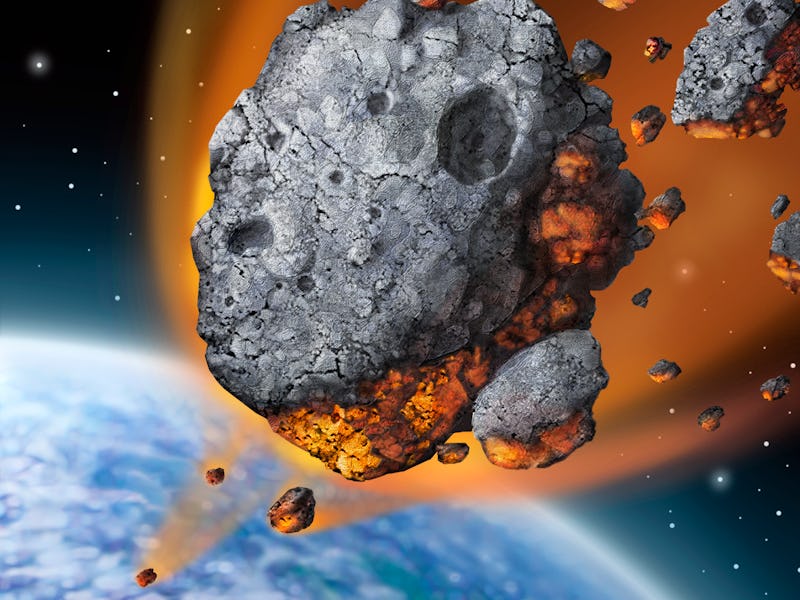An Asteroid Hunter Explains How to Save Earth From Flying Rocks

If we ever detect an asteroid that’s on a collision course with Earth, things would play out a little different than the movie Armageddon.
In her new book, Asteroid Hunters, asteroid researcher Carrie Nugent shares what she learned talking to NASA Planetary Defense Officer Lindley Johnson and other experts.
“The scientific community is seriously considering three main strategies,” Nugent told Inverse in a recent interview.
In fact, one of them does involve nukes, but not how Bruce Willis used them.
A gravity tractor is a small probe that could slowly redirect an asteroid's course away from Earth.
Gravity Tractor
The first technique sounds like something out of Star Wars. It’s called a gravity tractor, and Nugent explained what this would look like.
“You put some sort of probe in orbit around the asteroid and use that probe to tug it off its course using gravity,” she said. “That’s a nice method because it’s very controllable. It’s slow. You can make fine adjustments as you’re going.”
The advantage of a gravity tractor, as Nugent explains, is that there’s no sudden explosion or impact to create new debris or unexpected movement. The problem with this method is that it’s not useful for asteroids over 500 meters, which are the ones that would pose the biggest threat to Earth.
A kinetic impactor would take years to build, but it could potentially knock an asteroid off course before it hits Earth.
Kinetic Impactor
A kinetic impactor could be called the brute force method of planetary defense.
“You take something really heavy, slam it into the asteroid, and shove it off its path,” said Nugent. This method faces some serious challenges: time and technology. NASA has yet to build one, and if we decided today that we needed one, it would be decades before a functioning kinetic impactor was ready. In the event that a kinetic impactor is deployed, it would require a warning time of one to two years.
A nuclear detonation on an asteroid wouldn't be quite the same as in 'Armageddon.'
Nuclear Detonation
“This would not be your Bruce Willis scenario,” said Nugent. “You know, drilling in and trying to plant the nuke in the surface. You’d want to detonate it slightly off to the side and use the irradiative force to shove the asteroid.”
Nugent explained that a nuclear detonation doesn’t make the best option for diverting a killer asteroid because an explosion creates too many unknown variables.
“Ideally, if there’s a scary situation,” she said, “we want something controllable where we know all the variables and we can very very precisely control what’s going to happen.”